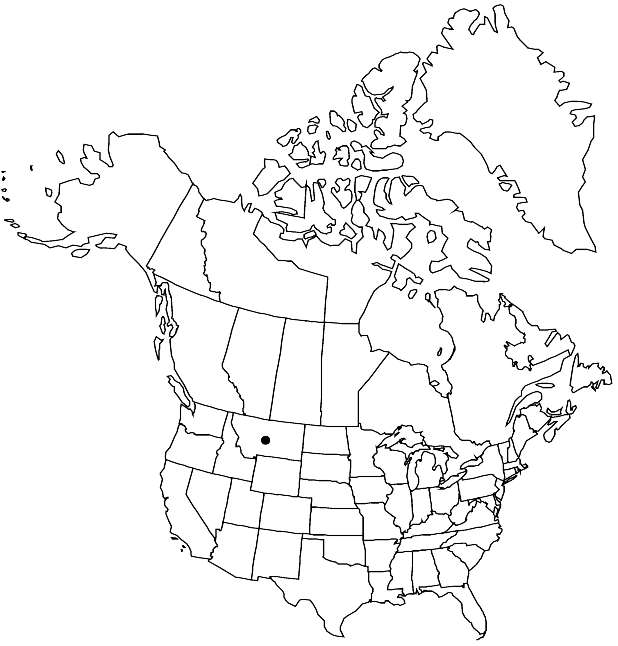Physaria humilis
Novon 12: 324. 2002.
Perennials; caudex simple, (thickened with persistent leaf-bases); densely (silvery) pubescent, trichomes 5-rayed or 6-rayed, rays furcate or 3-branched. Stems simple or few to several from base, prostrate, (from below a terminal rosette of leaves, unbranched), 0.2–0.5 dm. Basal leaves: blade elliptic to broadly ovate or obovate, (1–) 1.5–2.5 (–3) cm, margins entire, (apex obtuse). Cauline leaves: blade spatulate, 3–7 mm, (base cuneate), margins entire. Racemes not loose, (scarcely elongated in fruit, 3–5-flowered). Fruiting pedicels (straight or slightly curved). Flowers: sepals (yellow-green), narrowly elliptic to narrowly long-triangular, 3.7–5 mm; petals oblanceolate to nearly obovate, 7–8.5 mm, (abruptly tapering to narrow claw). Fruits wider than long, apex truncate to shallowly notched, compressed (angustiseptate), 3–4 mm; valves densely pubescent, trichomes ascending to erect, sparsely pubescent inside; ovules 4 per ovary; style 2–3 mm. Seeds plump, (slightly compressed).
Phenology: Flowering Jun-early Aug.
Habitat: Steep slopes, dry summits, rocky fellfields, dry ledges
Elevation: 2700-2900 m
Discussion
Of conservation concern.
Physaria humilis is found in metamorphosed rock and detritus on the peaks of the Bitterroot Mountains.
Selected References
None.
Lower Taxa
"wider than long" is not a number."not" is not a number. "elongated" is not a number."thick" is not a number."dm" is not declared as a valid unit of measurement for this property.
